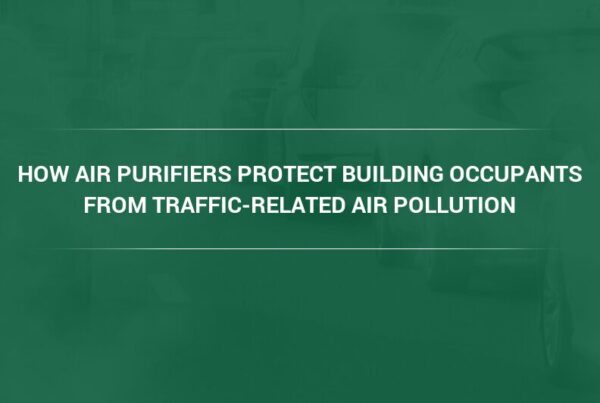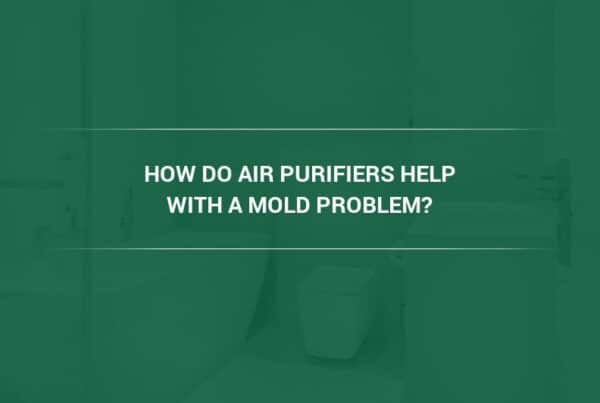Time and again we hear that air pollution is bad for the health of the public, hence the important role played by the air purifier industry in keeping the air inside our homes, offices and schools safe to breathe.
But just how bad is the problem of air pollution?
According to a 2016 report, air pollution is one of the factors contributing to 16,000 premature births in the United States each year, costing Americans more than $4.33 billion annually. Of that number, $3.57 billion comes from lost productivity related to the physical and mental disabilities—side effects of being born prematurely. The rest comes from hospital visits and other healthcare expenses caused by premature birth.
The study looked beyond the regular culprits of air pollution such as carbon monoxide and ozone; instead, it used particulate matter (PM) with a diameter of less than 2.5 microns (PM2.5) as a stand-in for air pollution. This particulate matter includes liquid and solid particles such as metals, acids, organic chemicals, and dust among others, all of which can be floating in the air at any time.
“Prolonged exposure to ultrafine particles can dramatically increase the risk of respiratory and cardiovascular diseases, increasing the mortality rates of people living in highly dense and polluted urban areas,” notes Camfil USA’s Charlie Seyffer, Manager of Marketing & Technical Materials for commercial air filters and 37-year ASHRAE member and active committee participant. “Below PM2.5, particles become more dangerous because they have the potential of penetrating deeper in the smaller alveoli of the lungs, crossing blood vessel walls and affecting the different organs of the body.”
While the study was the first of its kind to look at the economic effects of polluted air from the perspective of preterm births in the United States, it is far from being the only study to look at the economic implications of air pollution as a whole.
Global Need for Commercial High Efficiency Filters
That same year, the World Bank published a report stating that air pollution costs the global economy more than $5 trillion in welfare costs alone every year. The report also suggests that people in developing nations are the ones needing commercial high efficiency filters the most.
The welfare figure includes financial factors associated with air pollution such as consumption and health. When looking at the effect on income, air pollution costs the global economy over $225 billion each year. The report accounts for both outdoor and indoor air pollution. The latter, which includes pollution sources like heating, cooking, and lighting, has remained constant over the last few decades despite technological advancements in these areas.
On the other hand, while first world nations have made significant progress in reducing outdoor air pollution levels, the same can’t be said for the developing world, where rapid growth in industry and transportation have also increased air pollution levels.
“Reports on high air pollution levels around the world are an urgent call for governments and ordinary citizens to take action,” said Seyffer. “Unfortunately, of the many risk factors we know that lead to premature death, the air we breathe is something we have little control over.”
This lack of control is mostly true when spending time outdoors, but we can do something about the air inside homes and buildings thanks to the advent of air purification systems.
Why the Developing World Desperately Needs Commercial High Efficiency Filters
The effects of air pollution and need for commercial high efficiency filters are perhaps most evident in the developing world, where in some places, the economic impact of lost labor income accounts for one percent of an entire country’s GDP.
Countries in South Asia and Sub-Saharan Africa, for example, lose approximately 0.83 percent of their respective GDP because of air pollution. As for the human price of pollution, nine out of ten people in low to middle-income nations live in areas where outdoor air pollution levels are dangerously high.
Take Nigeria, for example, which is home to four of the world’s worst cities for air pollution: Onitsha, Kaduna, Aba, and Umuahia. Nigeria and other African cities are rapidly experiencing increasing levels of outdoor air pollution due to a booming economy and industrialization, which often come at the expense of the environment due to the lack of or absence of regulatory controls.
Subtle Dangers of Low-Level Pollution Highlight Need for High Efficiency Air Filters
Most studies on air pollution, however, look at the health and economic effects of severe air pollution. Yes, we know that things like smog and exposure to traffic pollution have a negative impact on respiratory and cardiovascular function, hence the need to spend as much time indoors under the protection of high efficiency air filters.
But another study suggests that even at low levels, air pollution can have the subtle impact of impairing our ability to perform everyday tasks. The researchers theorize that because the brain is one of the most oxygenated organs in the body, any contaminants inhaled may impact our brain function as well.
In fact, the researchers found that air pollution at levels below regulatory standards set by the U.S. Environmental Protection Agency (EPA) can still have an impact on work productivity within the call center, manufacturing, and agricultural industries.
There is also a growing body of literature showing that exposure to low-level air pollution by the fetus, or when the brain is still developing, can leave long-lasting and possibly permanent cognitive issues, which manifest themselves in demonstrable deficiencies on mental performance in school.
Commercial Air Filtration Systems Are Not Permanent Solutions
Unfortunately, commercial air filtration systems only address the symptoms of air pollution. It will take concerted actions by both the private and public sector to make a lasting effect on reducing air pollution levels. The good news is that we now have a record of environmental success, proving that concrete steps towards solving environmental crisis work.
In the 1980s, the world woke up to the news that harmful gases in the atmosphere had punched a hole in the ozone layer, increasing the risk of people developing skin cancer from UV exposure. In response, governments around the world came together to sign the Montreal Protocol, a treaty that banned ozone-depleting substances such as CFCs.
Today, studies show that these efforts have worked and continue to work—the ozone layer may be finally healing.
Go for Quality When Choosing a Room Air Purification System
If you do decide to install an air purification system in your building or home to address specific problems within an area, remember to avoid cheap, bargain units that promise to remove 99.99 percent of indoor air contaminants. Portable air purifiers should remove particulates and gaseous contaminants. The best air purifiers incorporate a HEPA filter and activated carbon. A true HEPA filter will have this kind of performance, but it will not come cheap. More often than not, you get what you pay for when it comes to air purifiers. Save your time and money and invest in a high-quality unit instead.\
To avoid any problems when choosing an air purifier or commercial high efficiency air filters, be sure to consult with a trusted supplier or manufacturer of air filtration systems. Remember, the best air filter isn’t necessarily the most expensive one or the one with the most features—it’s one that matches your containment needs and budget. To learn more about the importance of indoor air quality control, talk to Camfil USA. You may also explore our catalog of air filtration systems to learn more about our products.
Lynne Laake
Camfil USA Air Filters
T: 888.599.6620
E: Lynne.Laake@camfil.com
F: Friend Camfil USA on Facebook
T: Follow Camfil USA on Twitter
Y: Watch Camfil Videos on YouTube



